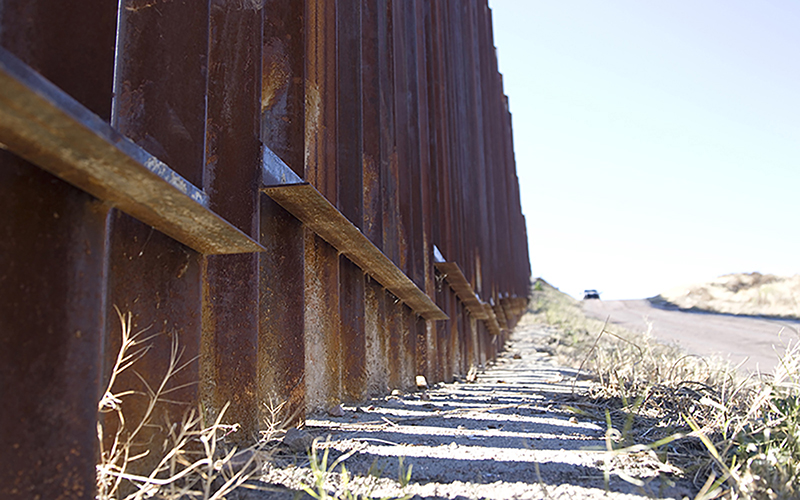
Critics said that environmental damage caused by current stretches of the U.S.-Mexico border wall are only now becoming apparent, and they are suing in an effort to make sure new sections of wall promised by the Trump administration are forced to comply with environmental protection laws. (Photo by Josh Orcutt/Cronkite News)
WASHINGTON – Rep. Raul Grijalva, D-Tucson, and the Center for Biological Diversity challenged President Donald Trump’s proposed border wall on environmental grounds Wednesday, going to court to force the administration to follow environmental protection laws before starting construction.
The lawsuit filed in U.S. District Court in Tucson charges that the Department of Homeland Security and U.S. Customs and Border Protection have failed to abide by the National Environmental Policy Act, which requires an environmental analysis of the proposed border wall before construction.
Grijalva and the center are calling on the agencies to “conduct an in-depth investigation of the proposal’s environmental impacts,” according to a news release from Grijalva’s office. That goal was echoed by a Randy Serraglio, the center’s Southwest conservation advocate, who said he is hoping for “good, sound scientific analysis” of the wall’s environmental impact to come out of the suit.
“We feel that the Trump administration should follow the law, and his border wall proposal is not only preposterous, it’s potentially extremely damaging,” Serraglio said.
Both Homeland Security and CBP declined to comment on the suit Wednesday because “as a matter of policy” the agencies “do not comment on pending litigation.”
The suit comes the same month that Homeland Security officials began reviewing bids from companies interested in starting construction on border wall prototypes. It was filed just two days after Attorney General Jeff Sessions visited the border in Nogales, where he issued new guidance calling on federal prosecutors to more vigorously pursue immigration cases.
Grijalva said that given Trump’s efforts to follow through on the border wall and other immigration and deportation campaign promises, advocates felt litigation was the only way “to get some transparency and some honest facts and science.”
“We don’t expect to be heard by Sessions, we don’t expect to be heard by Trump himself,” Grijalva said of the need to go to court to force action.
Serraglio said that the last “programmatic environmental impact statement” for the U.S.-Mexico border enforcement program was done in 2001, and “things have changed dramatically since then.”
Those “things,” according to the lawsuit, include greater scientific knowledge and the “designation of final critical habitat within 50 miles of the U.S.-Mexico border under the Endangered Species Act.”
Serraglio said the existing sections of the border wall were built without environmental review. At that time, the suit said, then-Homeland Security Secretary Michael Chertoff “waived more than 35 laws” that might have hindered the construction of the original border wall.
Serraglio said the consequences of that construction are already being felt, and include millions of dollars of damage caused by flooding and erosion in areas surrounding the border. He also said the natural movement of many species, some endangered or threatened, is “completely blocked” by the current wall, which could get worse with an expansion.
“It’s (the wall) absolutely unnecessary, it will be incredibly expensive, the effectiveness is unknown,” Serraglio said.
Grijalva left little doubt about where he stands on the issue.
“Trump’s wall – and his fanatical approach to our southern border – will do little more than perpetuate human suffering while irrevocably damaging our public lands and the wildlife that depend on them,” Grijalva said in a prepared statement.